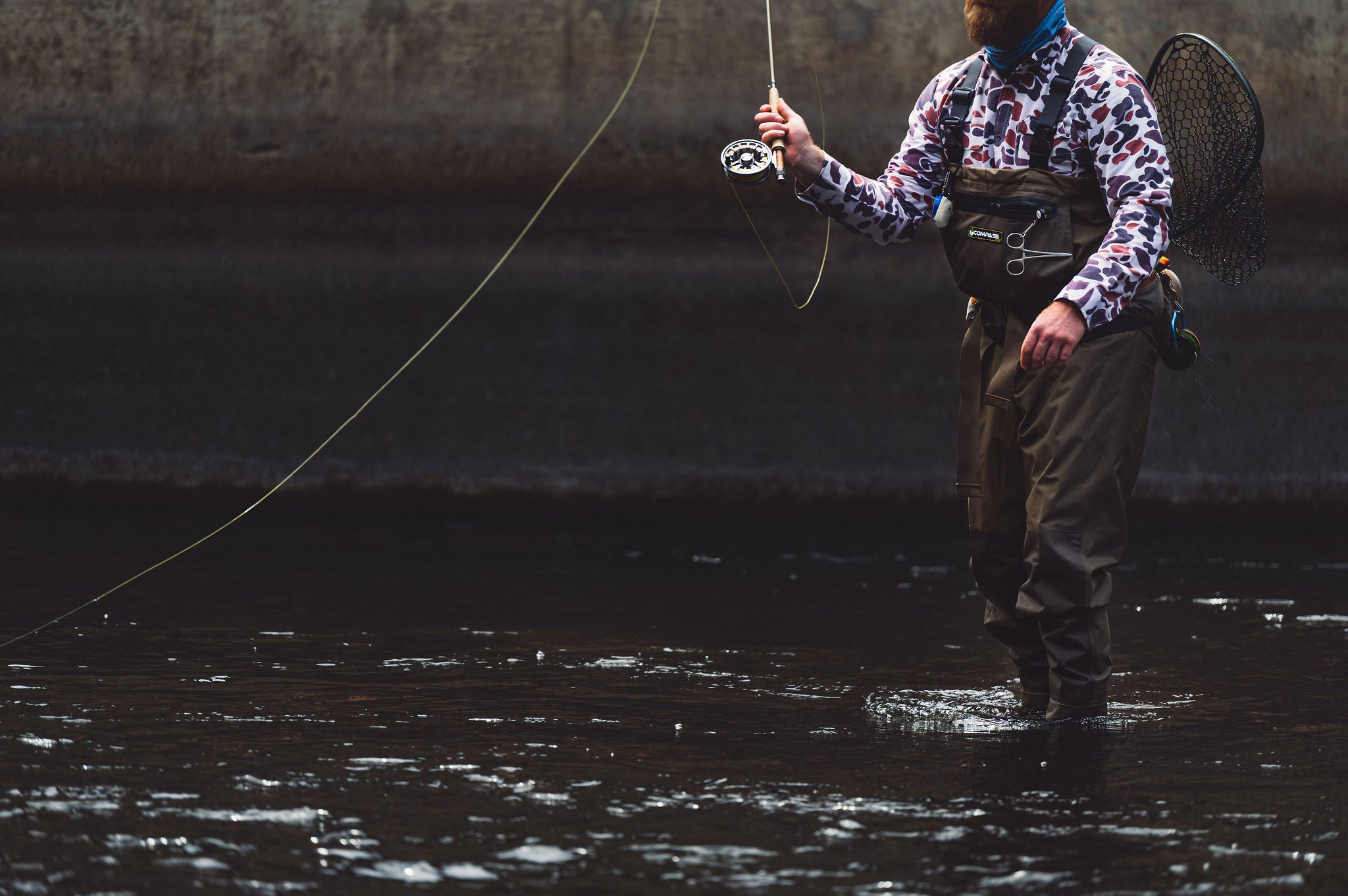If you don't know what a double taper is or the performance benefits that it can enhance your angling game with, chances are you're missing out on a useful tool in your fly line arsenal. Although double tapers have been around long before todays unique and complex weight forward taper designs, they are still on the less popular side of the two taper styles. It wasn't until recent years, that we began to notice an uptick in their popularity again. We believe there is always room for a DT fly line in everyone's quiver and we're going to tell you why.
Difference and Benefits of DT vs WF Fly Line
The taper is easily the biggest difference between a weight forward and double taper design. Weight Forward (WF) lines are built to be an ideal "shooting" tool while the Double Taper (DT) design focuses on being better at line control for roll casts and mends.
Trout Boss (WF) Taper

Trout Boss (DT) Taper

In the above diagram you'll see both the weight forward and double taper Trout Boss designs as a reference. The thin running line portion of a weight forward design provides less line friction in the guides which aids in better shooting qualities. Those qualities are ideal for reaching targets with limited backcast room, quick recasts to targets at greater distances, or when trying to cast as far as possible.
 The double tapers main feature is its long level body which is an equal diameter through the fly line from end to end behind each taper. The level body equates to more mass compared to a thin running line of a weight forward design. In return, the added mass provides more energy transition to the tip of the fly line when roll casting and flexes rods deep for better mends at longer distances.
The double tapers main feature is its long level body which is an equal diameter through the fly line from end to end behind each taper. The level body equates to more mass compared to a thin running line of a weight forward design. In return, the added mass provides more energy transition to the tip of the fly line when roll casting and flexes rods deep for better mends at longer distances.
By far the biggest advantage of the double taper fly line is its ability to be reversed on the reel after its life span is over on one side, and practically provide an angler with a brand-new fly line. Most abuse on a fly line happens between 20-40ft from the tip, as this is where the majority of false casts take place. Fly lines are typically 80-100ft long, meaning when you reverse your double taper, you'll be fishing a new section of line that has minimal to no wear and tear.

Cortland offers four different double taper options. These options include the following:
333 DT - Our Budget friendly DT line that will easily get you into the Double Taper world without having to break the bank.
444 Sylk DT - Specifically built for bamboo/fiberglass rods, the Sylk DT is one of our oldest double taper lines in the lineup. It continues to prove itself as a fine diameter, smooth casting double taper line that pairs extremely fine with slower action rods.
444 Peach DT - A tried and true classic, the Peach DT is the oldest double taper line in our selection and has proved to be a great all purpose DT line for a variety of rods, and fishing applications. Versatility is the key with the Peach DT.
Trout Boss DT - Our most modern DT line, The Trout Boss DT, is built a full size heavy to help combat fast action rods while being able to load them deep and provide as much line control as possible. This line also features a 3 color design, with one side being a highly visible orange and the other side being a stealthy moss green.


